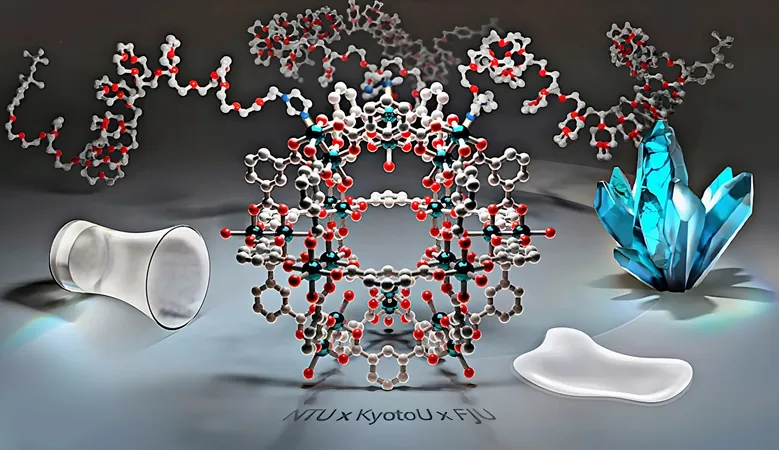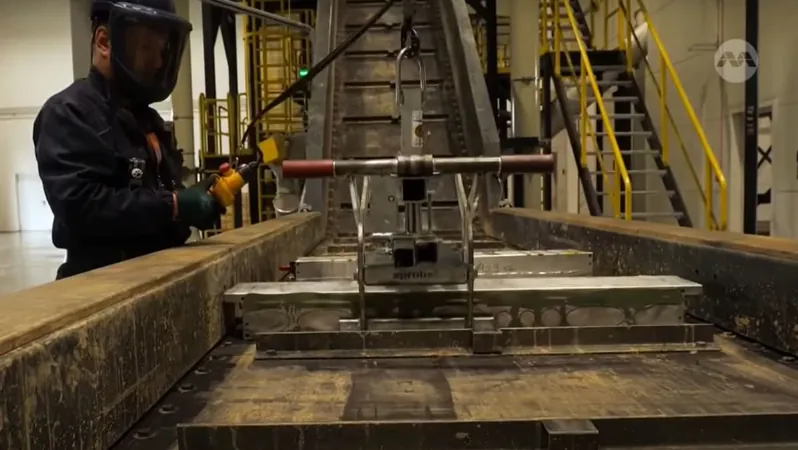
Revolutionary Shape-Shifting Membrane: A Breakthrough for Cleaner Energy!
2024-11-18
Author: Li
In the realm of industrial gas separation, an unknown yet pivotal facet of our fight for environmental sustainability, exciting advancements are making waves. As the world grapples with escalating greenhouse gas emissions, the capability to effectively separate gases has never been more crucial. This innovative technology holds the potential to drastically reduce industrial pollution, bolster compliance with environmental regulations, and support the creation of cleaner, sustainable energy sources.
Recent breakthroughs have illuminated the path toward an efficient and adaptable membrane technology that stands to transform gas separation. A collaborative effort between Kyoto University’s Institute for Integrated Cell-Material Sciences (WPI-iCeMS) and National Taiwan University’s Department of Chemical Engineering has birthed a groundbreaking phase-transformable membrane. This innovative material possesses a remarkable ability to transition between liquid, glass, and crystalline states, significantly enhancing gas separation efficiency.
Professor Shuhei Furukawa of Kyoto University elaborates on the typical limitations of traditional solid membranes, stating, “They are effective but lack the flexibility necessary for optimal performance in industrial settings.” In contrast, this new membrane exhibits remarkable adaptability, allowing it to morph in response to varying environmental conditions, making it a versatile solution for a multitude of gas separation tasks.
Notably, the membrane demonstrates exceptional potential in carbon dioxide (CO2) capture. The ability of its liquid phase to efficiently extract CO2 from hydrogen mixtures could reduce energy consumption during the capture process, representing a key evolution in green energy technology. Furukawa asserts, “This capability could substantially lower industrial CO2 emissions and enhance hydrogen purification, vital for clean energy production.”
The adaptability of this membrane not only makes it a game changer for carbon capture but also paves the way for tailored applications. By fine-tuning the structures of metal-organic polyhedra (MOPs) and incorporating various polymers, industries can optimize the membrane’s properties for specific gases and operational environments.
However, before this cutting-edge membrane technology can be widely adopted, challenges remain. Scaling up production while maintaining cost-effectiveness is paramount for commercial viability. Professor Dun-Yen Kang emphasizes, “Successfully tackling these challenges will allow industries to integrate this breakthrough into their operations, ushering in a new era of advanced gas separation.”
Institutions and companies exploring the implementation of this membrane could witness significant advancements across multiple sectors, including energy generation, chemical manufacturing, and waste management. Its versatility could revolutionize carbon capture strategies, aligning industries with sustainable practices and regulations more seamlessly.
The implications of this technological leap can’t be understated. Enhanced hydrogen purification systems could play a pivotal role in the global transition away from fossil fuels, as society shifts toward cleaner, renewable energy sources. With the backing of ongoing research and promising applications on the horizon, the journey of this shape-shifting membrane is just beginning.
Stay informed about these remarkable innovations that could reshape our future! The full study detailing this transformative research appears in the esteemed journal *Nature Communications*.


 Brasil (PT)
Brasil (PT)
 Canada (EN)
Canada (EN)
 Chile (ES)
Chile (ES)
 España (ES)
España (ES)
 France (FR)
France (FR)
 Hong Kong (EN)
Hong Kong (EN)
 Italia (IT)
Italia (IT)
 日本 (JA)
日本 (JA)
 Magyarország (HU)
Magyarország (HU)
 Norge (NO)
Norge (NO)
 Polska (PL)
Polska (PL)
 Schweiz (DE)
Schweiz (DE)
 Singapore (EN)
Singapore (EN)
 Sverige (SV)
Sverige (SV)
 Suomi (FI)
Suomi (FI)
 Türkiye (TR)
Türkiye (TR)